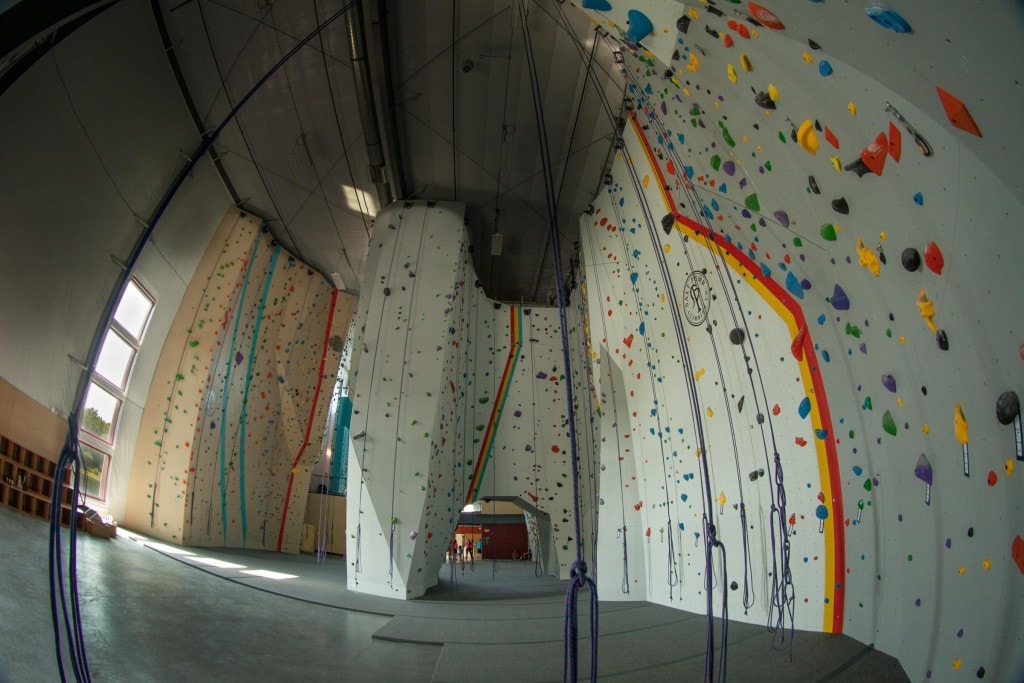Our Route Setting Philosophy: A Natural Feel and Flow
By Tino Fiumara
At Salt Pump, we aim for elements of the indoor climbing experience to be similar to the outdoor climbing experience. This is especially important in regards to our setting philosophy. We aim for our setting to have a natural feel and flow.
What holds are ‘on’?
At Salt Pump, all wall features and same colored holds are ‘on’. If you can reach a hold of the same color that is nearby, then you can use it – that is by design. Just like climbing outside, sometimes a really good handhold is a foothold for another distinct and individual line. We like to encourage the same feel in our climbing at Salt Pump.
Where do I start?
Starts are as low as feels natural. Not every boulder problem is a sit start, but that being said, most of them are crouch starts. We normally place the route/problem placard on the lowest start hold. Many boulder problems starts are ‘split starts’ – where you can go left or right – and each is it’s own problem, and are denoted by the placards.
The lowest natural start is the beginning to the problem or route. If you find yourself trying to awkwardly match on some really small hold with an inconceivable body position, then that probably isn’t the start. Though the correct V7 start may seem impossible for a V3 climber, but that may be purely based on difficulty.
Where do I end?
At Salt Pump, the top of the walls are designed to be grabbed. Translation – the top of the wall is a huge, comfy jug. We don’t mark the specific top area to grab, so you can grab the top wherever you’d like to.
This is the same for route climbing. We prefer that people do not grab the metal bar where the rope runs over – this is mostly risk management. The top of the wall is right there and can be grabbed safely, and the top of the wall is the designed end of the route for both top-rope and lead routes.
How does grading work?
Grading in climbing is a subjective process – there are no clearly defined traits that would denote one grade over another. This is very clear when you travel and climb at different areas. The grades between the Red River Gorge, Joshua Tree and Rumney are all very different. They are different because each place climbs differently because the geology has produced a certain style.
This is also true about different gyms. Not all gyms grade the same – and this is ok. What is important, is that there is consistency throughout the gym. Many gyms orient their grades to be relative to the outdoor climbing in the region, so as to make the transition outside as smooth as possible.
The style of climbing means a lot to grading. Often people find some styles inherently more difficult than others. Just because someone can climb a specific grade in one style (ie. overhung), it doesn’t mean they should automatically be able to climb the same grade in a different style (ie. slab). What it does mean is that we should work at all styles to become the most well-rounded climbers we can be!
If you ever have any questions about a route, please feel free to ask a Salt Pump staff member. Also, if you come across any holds that have spun, definitely let us know. We always want feedback (please email us or leave a note in the comment box located under the community bulletin board) so that we can provide the best climbing experience possible to our community.
Thank You!
